Physical Address
304 North Cardinal St.
Dorchester Center, MA 02124
Physical Address
304 North Cardinal St.
Dorchester Center, MA 02124
Cooking sushi rice in a rice cooker is an easy way to achieve perfect results with minimal effort. To make sushi rice, the key steps involve selecting the right short-grained rice, rinsing it to enhance texture, and following the proper water-to-rice ratio for cooking. With just a few simple techniques, anyone can prepare sushi rice that is sticky and flavorful, perfect for sushi rolls or as a side dish.
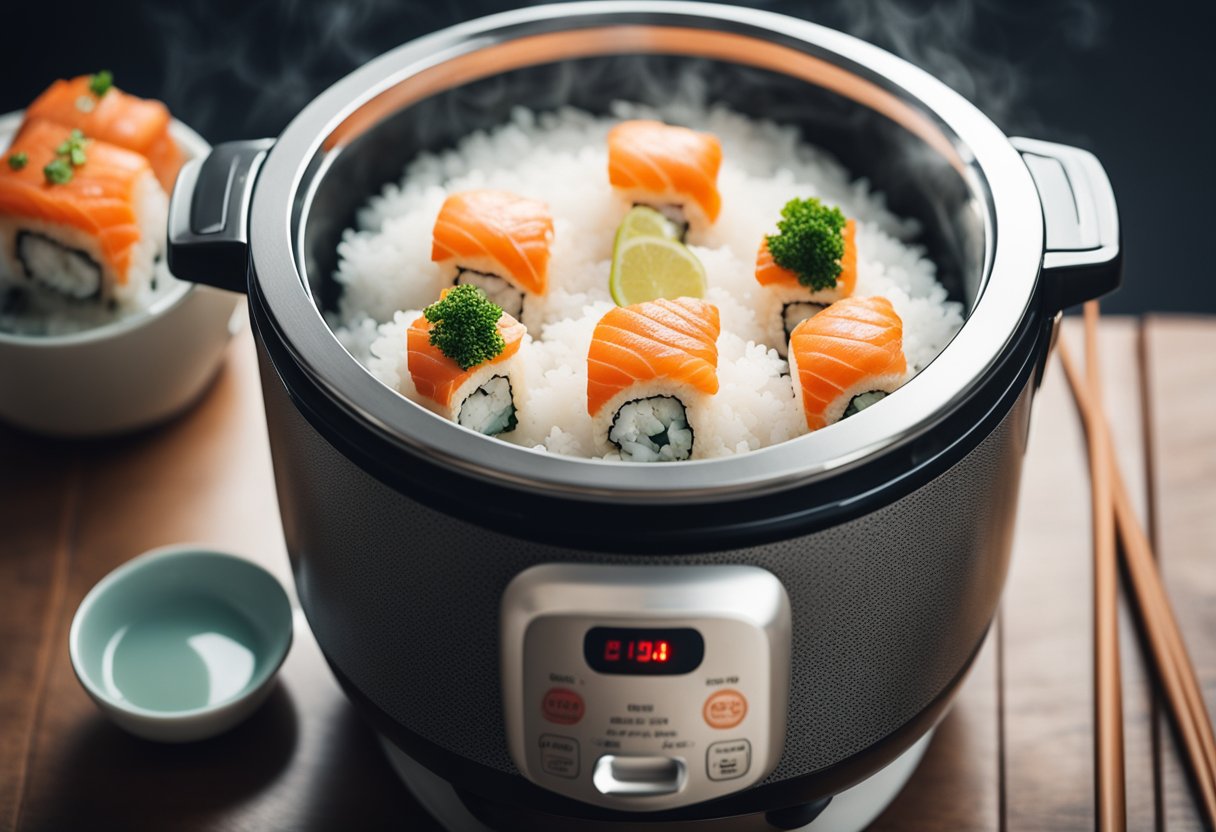
Using a rice cooker not only saves time but also ensures consistent results. It takes the guesswork out of the cooking process, allowing the user to focus on creating delicious sushi dishes. With the right ingredients and technique, sushi rice can elevate any meal.
Embracing these methods opens the door to various sushi-making experiences, whether for a simple dinner or a special gathering. The satisfaction of making sushi rice at home is attainable for everyone, even beginners.

Sushi rice plays a crucial role in creating authentic sushi. Its texture and flavor can make or break the overall dish. This section discusses the history of sushi rice, the types of rice used, and why consistency is important.
Sushi rice has a rich history that dates back centuries. Originally, sushi originated in Southeast Asia as a method of preserving fish using fermented rice. The rice was discarded after fermentation, but over time, this evolved into a dish where the rice and fish were consumed together.
During the Edo period in Japan (1603-1868), sushi transformed dramatically. The development of vinegared rice marked a shift towards modern sushi. This new preparation method improved flavor and preservation. Sushi became popular in street food stalls. Today, sushi rice is a staple in Japanese cuisine and has gained global recognition.
When preparing sushi, the type of rice matters significantly. Most commonly, short-grain Japanese rice is used. This type is sticky, which helps the rice hold together when forming sushi rolls. It also absorbs flavors well.
Another option is medium-grain rice, which has similar qualities but might not be as sticky. Some people use California or sushi rice blends, but these can differ in texture and flavor.
Important considerations include the starch content and how the rice cooks. Using the right rice ensures that sushi maintains its traditional taste and texture.
The consistency of sushi rice is essential for creating quality sushi. If rice is too dry, it won’t stick, making it challenging to form rolls. If it is too wet, the sushi may become mushy.
Achieving the right consistency involves keeping a careful balance of water during cooking and proper seasoning afterward. Sushi rice should be glossy and sticky but not overly wet.
Proper cooking techniques ensure each grain remains separate yet cohesive when pressed together. This creates the perfect base for sushi, allowing it to hold its shape while offering the ideal taste experience.
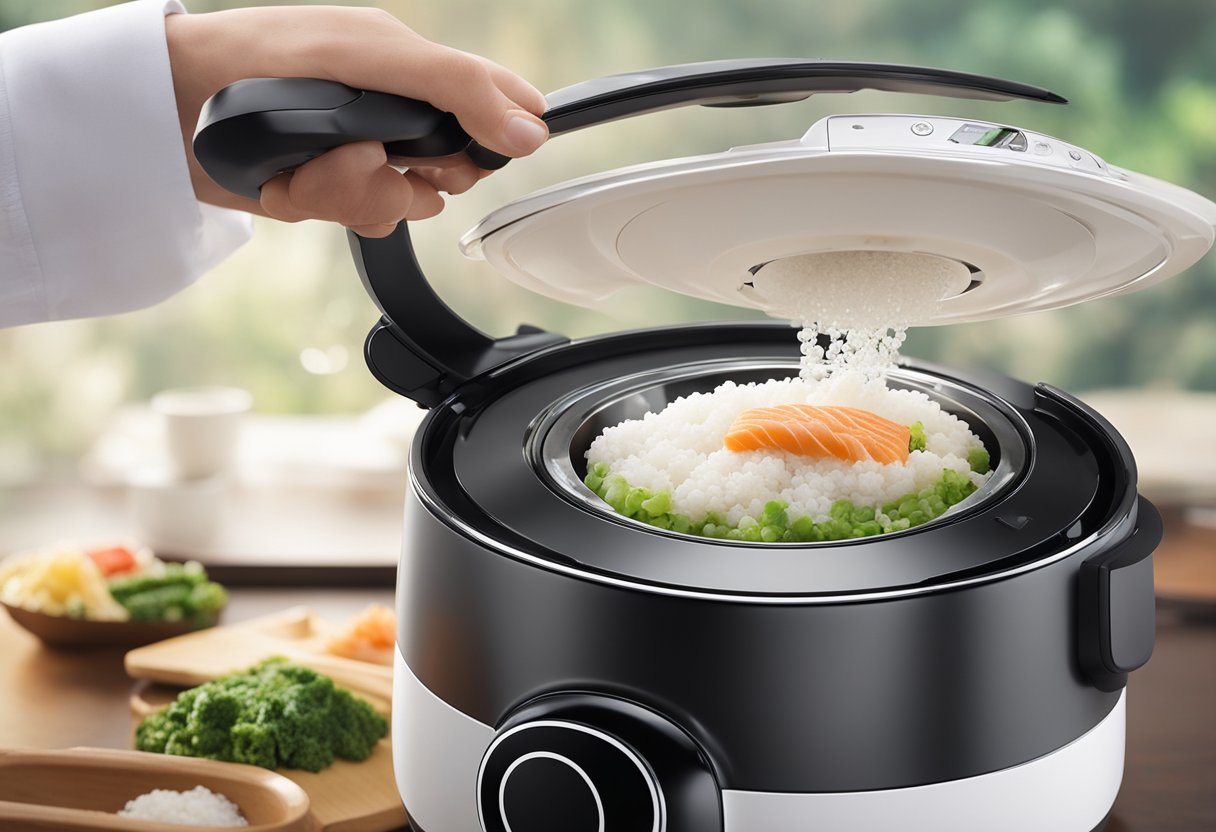
Choosing the right rice cooker can significantly impact the quality of sushi rice. Key features and specific models are important considerations for achieving the best results.
When selecting a rice cooker for sushi, several features should be taken into account:
Here are some top choices for sushi rice cookers:
Choosing a rice cooker that meets these specifications can enhance the sushi-making process and ensure great-tasting rice.
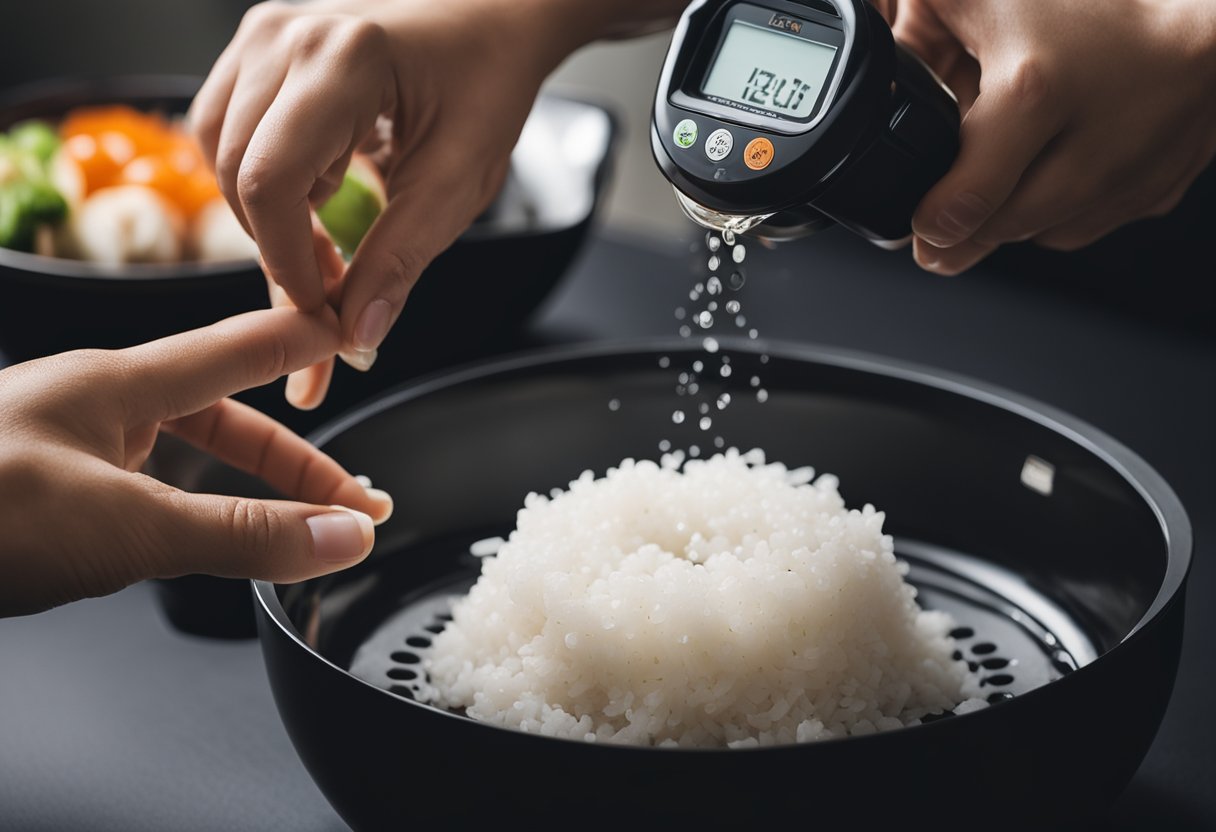
This section covers the essential steps for preparing sushi rice: washing, soaking, and seasoning. Each step plays a critical role in achieving the right texture and flavor for sushi rice.
Washing the rice is an important first step. It helps remove excess starch, which can cause the rice to become gummy. Rinsing the rice under cold water is recommended.
This process not only improves the texture but also prepares the rice for even cooking. After washing, the rice will have a cleaner taste and a better bite.
Soaking the rice allows it to absorb moisture before cooking. This step is crucial for achieving evenly cooked grains.
Soaking helps the rice grains expand, which results in a better texture. After soaking, drain the water completely to prepare for cooking. This ensures the right water-to-rice ratio during cooking.
Seasoning is what makes sushi rice distinct. It adds flavor and enhances the overall sushi experience.
Gently fold the seasoning into the rice using a spatula. This method helps to maintain the rice’s texture while evenly distributing the flavor. Proper seasoning balances the dish and complements the sushi fillings perfectly.
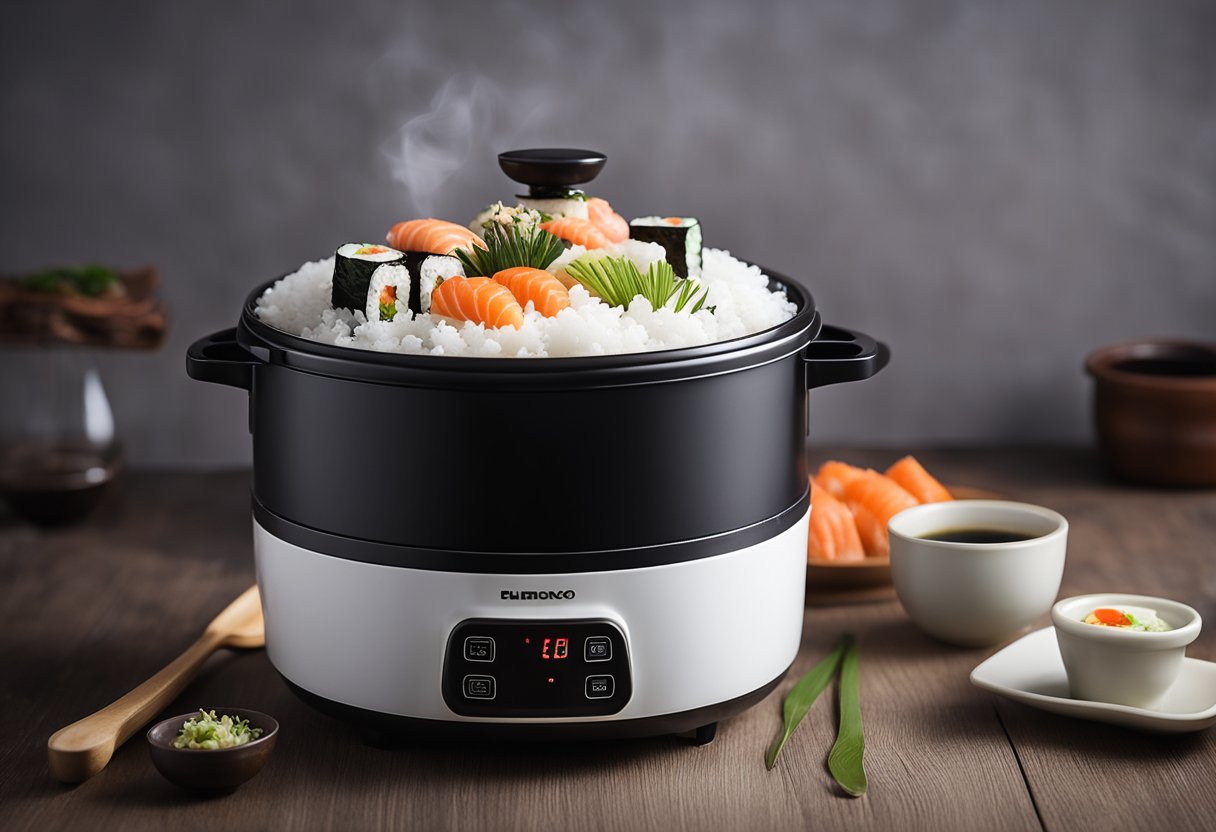
Cooking sushi rice in a rice cooker involves precise measurements and careful timing. Understanding the water to rice ratio, cooking times, and common issues can greatly improve the results.
The ideal water to rice ratio for sushi rice is typically 1:1. This means for each cup of sushi rice, one cup of water is needed.
Cooking sushi rice in a rice cooker typically takes about 20 minutes, depending on the model.
Sometimes, sushi rice may not turn out as expected. Here are a few common problems and solutions:
These tips can help ensure that the sushi rice is cooked perfectly every time.
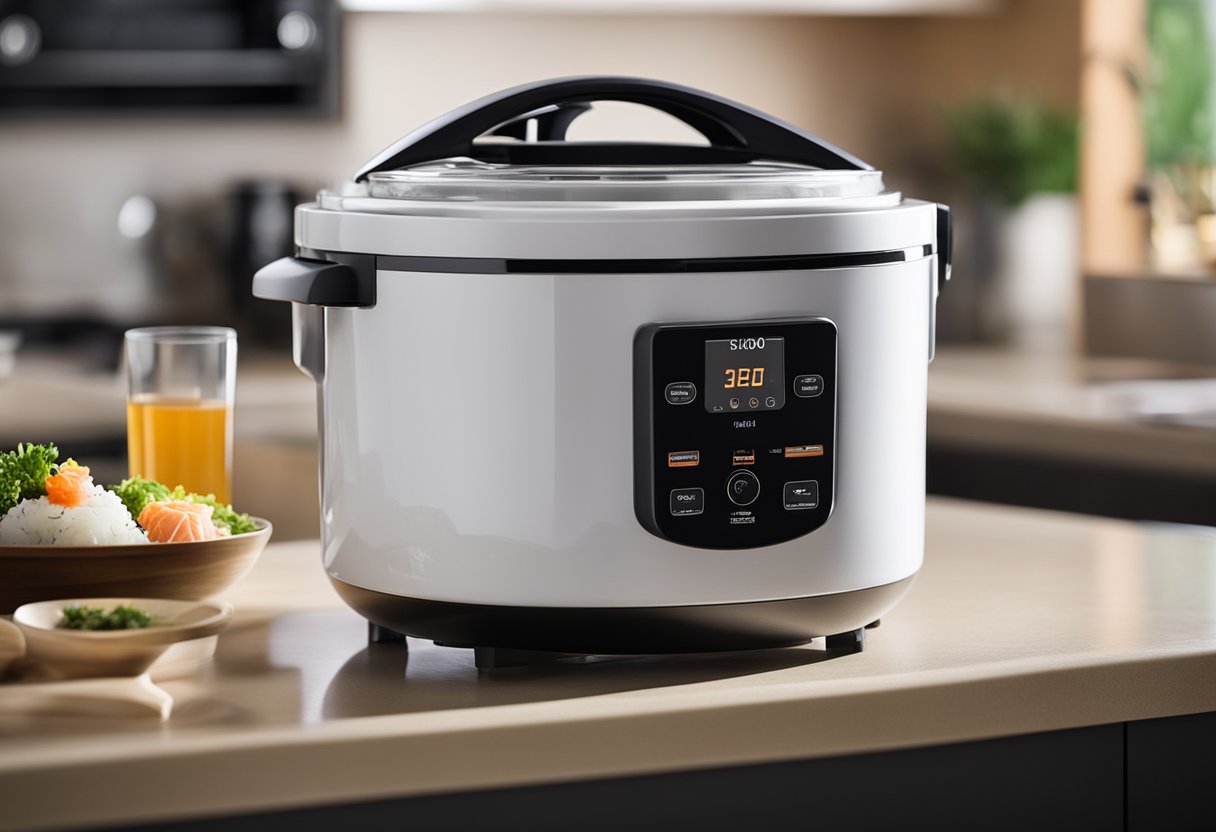
After cooking sushi rice, the next important steps are to cool the rice properly and add the vinegar solution. These finishing touches enhance the flavor and create the perfect texture for sushi.
Once the rice is cooked, it must be cooled down to achieve the right consistency. This step is crucial.
He or she should transfer the rice to a large, flat dish or a wooden sushi tub, known as a hangiri. Spreading the rice out helps it cool evenly.
Using a paddle or a wooden spoon, they can gently turn the rice while fanning it with a hand fan or a piece of cardboard. This process gives the rice a shiny appearance and prevents clumping.
Cooling should be done at room temperature, avoiding refrigeration, as cold rice loses its ideal texture. It should take about 10 to 15 minutes for the rice to cool properly.
The vinegar solution adds the signature flavor to sushi rice. It combines rice vinegar, sugar, and salt.
To make this mixture, they should heat the rice vinegar with sugar and salt in a small saucepan. Stir until both the sugar and salt dissolve completely.
Once cooled, they can drizzle this solution over the cooled rice. It’s essential to do this gently, as they want to keep the rice fluffy while evenly distributing the vinegar mixture.
A gentle folding motion helps incorporate the vinegar without breaking the rice grains. This step takes about 5 minutes, and the rice should be at room temperature when served.

Proper storage of sushi rice and managing leftovers is essential for maintaining quality and taste. Following specific steps ensures that the rice remains fresh and ready for use.
To store cooked sushi rice, it is important to cool it properly first. Allow the rice to reach room temperature after cooking. Once cooled, transfer it to an airtight container. This prevents moisture loss and maintains flavor.
Refrigeration is recommended for short-term storage. It is best to consume the rice within 3 to 5 days for optimal quality. Glass or plastic containers with tight-fitting lids work well. Avoid storing rice in warm places, which can promote spoilage.
For longer storage, sushi rice can be frozen. Place the rice in a resealable freezer bag, removing as much air as possible. Label the bag with the date for easy tracking. Frozen sushi rice can last up to a month.
Reheating sushi rice requires careful attention to prevent dryness. The rice can be warmed in a microwave or on the stovetop. If using a microwave, place the rice in a bowl with a splash of water. Cover it with a damp paper towel. This helps maintain moisture during reheating.
Heat for 30-second intervals, stirring in between. Check the rice frequently to ensure it doesn’t overcook. On the stovetop, use a pot with a lid. Add a bit of water, cover, and gently warm it over low heat.
Adding a small amount of rice vinegar can help restore the original flavor. This keeps the taste vibrant, similar to freshly prepared rice. Always check texture and flavor before serving.

Sushi rice is an essential ingredient in Japanese cuisine, especially in making sushi. Its unique texture and flavor enhance various dishes beyond traditional sushi.
Making a perfect sushi roll starts with high-quality sushi rice, which should be sticky and slightly sweet. The right ratio of water is crucial when cooking the rice. A typical ratio is 1 cup of rice to 1.2 cups of water.
After cooking, the rice should cool slightly before adding seasonings. Common seasonings include rice vinegar, sugar, and salt. Mixing these in a gentle folding motion ensures even distribution without damaging the rice grains.
When assembling rolls, using a bamboo mat can help maintain controlled pressure. Distributing the sushi rice evenly and leaving space at the edges is essential for rolling. The addition of fresh ingredients like vegetables, seafood, or tofu can elevate the flavor and texture of the sushi roll.
Sushi rice is versatile and can be used in various dishes. It can serve as a base for rice bowls, which may feature toppings such as grilled meats, vegetables, or eggs.
Another common dish is chirashi, a Japanese rice bowl topped with various sashimi and garnishes. The sticky nature of sushi rice makes it suitable for these presentations, as it holds toppings well.
Additionally, sushi rice can be included in salads or rice cakes, offering a unique twist to traditional recipes. It absorbs flavors effectively, making it a great pairing with dressings or sauces, enhancing the overall dish.
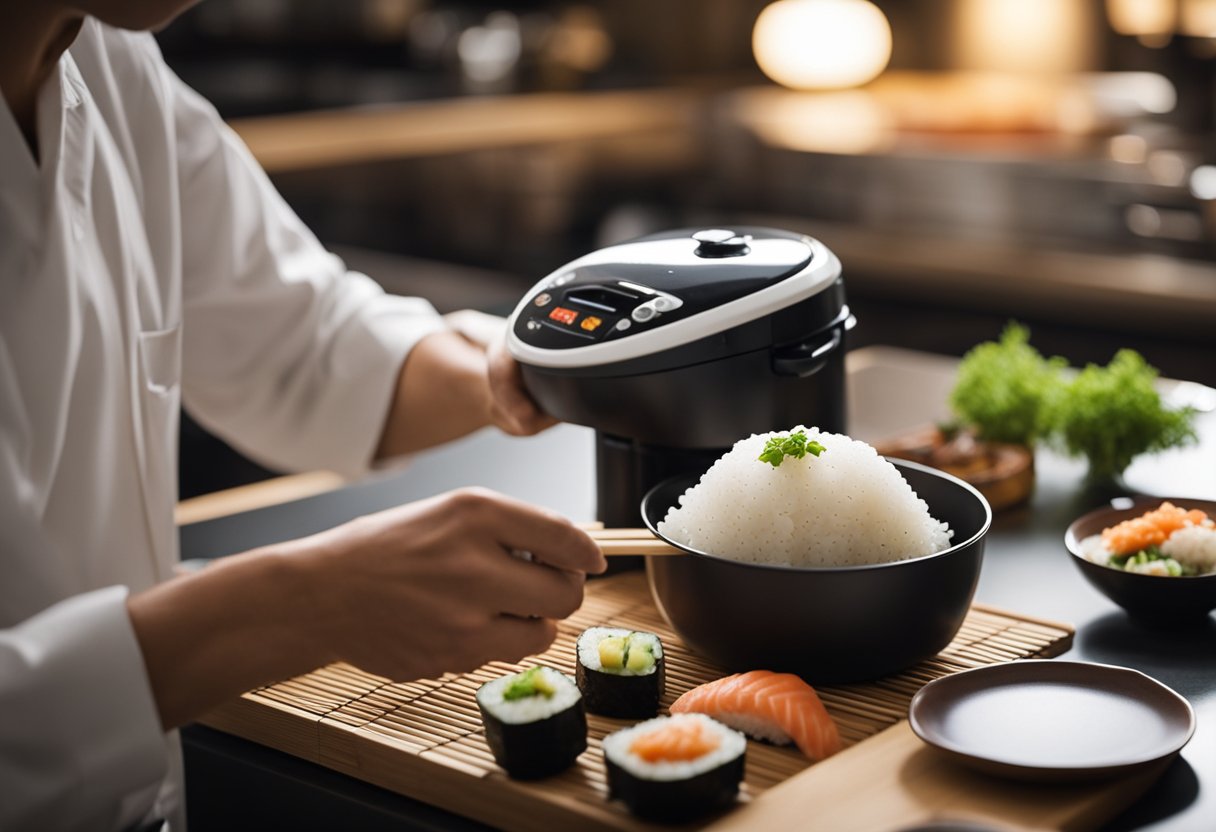
When using a rice cooker to prepare sushi rice, following health and safety guidelines is important.
First, read the manufacturer’s instructions carefully. This information outlines proper usage and safety tips for the specific model.
Cleanliness is crucial. Always wash hands before handling food and ensure all utensils and surfaces are clean. This helps to prevent contamination.
When rinsing sushi rice, use cold water to avoid cooking the rice prematurely. Rinse until the water is clear, which removes excess starch for better texture.
Proper water-to-rice ratio is essential. Typically, a 1:1 ratio works well for sushi rice. However, some rice cookers may have specific settings for sushi rice, which should be followed.
After cooking, let the rice rest for a few minutes before seasoning. This allows the steam to escape, cooling the rice slightly.
While seasoning the rice, ensure that the vinegar mixture is at a safe temperature. Heating it too much can cause it to bubble, leading to burns.
Finally, store any leftover rice properly. Sushi rice is best eaten fresh, but if storing, keep it in an airtight container in the refrigerator. Use within a day to maintain quality and safety.
By following these considerations, one can safely enjoy delicious sushi rice at home.

Sourcing rice sustainably is vital for both ethical practices and environmental health. This section explores how rice is sourced and the impact of its production on the planet.
Ethical sourcing involves choosing rice that supports fair labor practices and local communities. Many brands focus on sourcing from farms that ensure fair wages and safe working conditions.
Some points to consider for ethical sourcing include:
By choosing rice from ethical sources, consumers can contribute to the well-being of farming communities and promote sustainable agricultural practices.
Rice production has significant environmental impacts that can affect sustainability.
Key concerns include:
To address these issues, more farmers are adopting practices like alternate wetting and drying, which conserve water and reduce emissions. Choosing sustainably produced rice can help mitigate these environmental challenges.
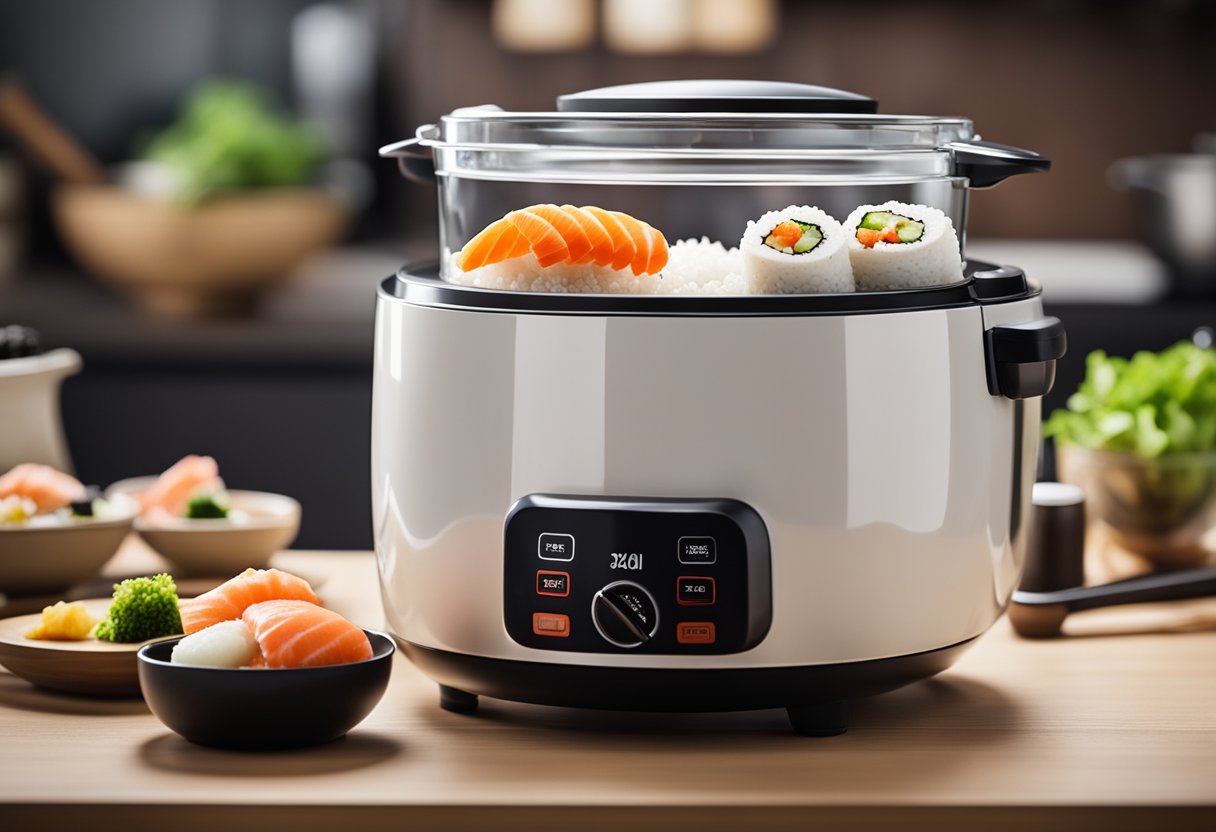
This section addresses common questions about cooking sushi rice in a rice cooker. It provides clear answers on water ratios, cooking steps, and the use of vinegar.
The typical water ratio for sushi rice is 1:1. This means using equal parts rice and water. Rinsing the rice before cooking can slightly adjust the amount of water needed, as rinsing removes excess starch.
To cook sushi rice, first rinse the rice until the water is clear. Then, let it soak for about 30 minutes. After draining, add the rice and water to the cooker and start it. Allow it to rest after cooking to achieve the right texture.
Rice vinegar is not required for cooking sushi rice, but it enhances the flavor. Typically, a mixture of about ¼ cup rice vinegar, 2 tablespoons of sugar, and 1 teaspoon of salt is used for 2 cups of rice after cooking.
Cooking sushi rice usually takes around 20 minutes. After this, it’s essential to let the rice rest in the cooker for an additional 10-15 minutes to firm up and achieve the desired texture.
Yes, sushi rice can be made without rice vinegar. The rice will still cook well, but it will be less flavorful. Adding vinegar is recommended for authentic sushi rice taste.
Sushi rice requires a specific preparation method, including rinsing and soaking, which improves its texture. It usually has a different water ratio compared to regular rice and should be seasoned after cooking for a distinct flavor.